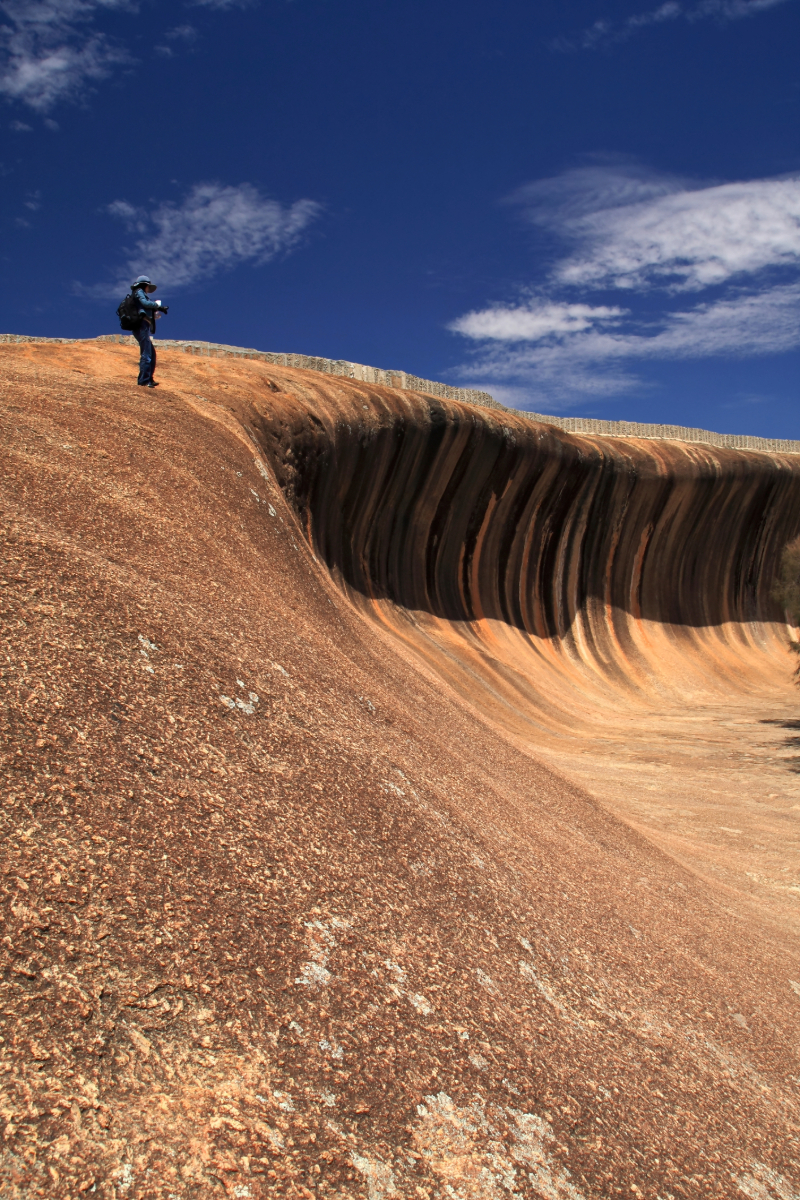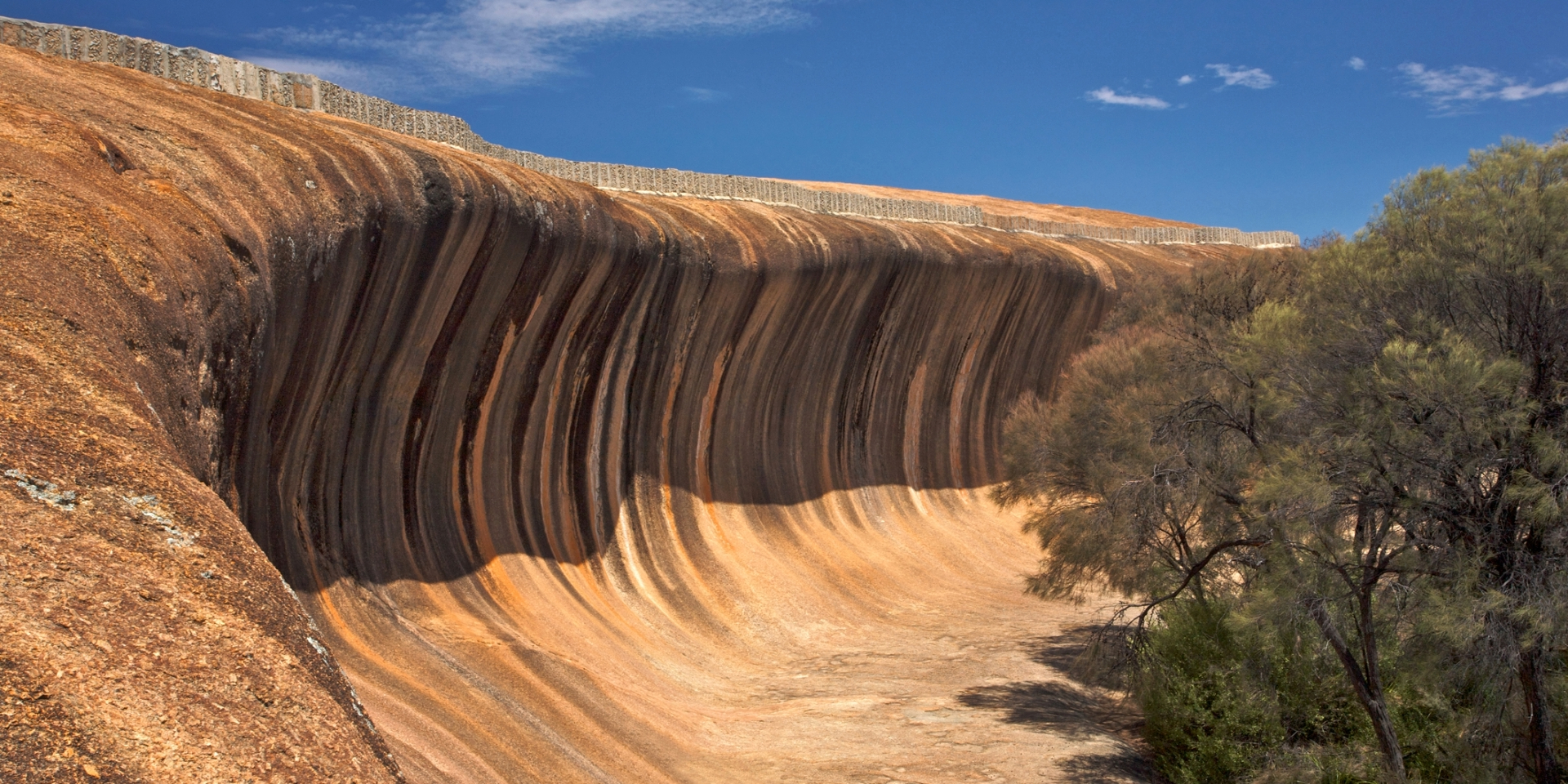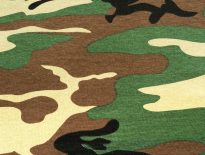If you’re reading this article in July of 2024, there’s a good chance I already have climbed or am currently climbing Wave Rock. Called Katter Kich in the Nyungar dialect, Wave Rock is an enormous granite cliff face in the shape of—you guessed it—a wave that protrudes from the surface of the earth in the middle of Western Australia’s Wheatbelt. It forms the north face of a hill called Hyden Rock—named after a nearby town.
The traditional custodians of the land, the Ballardong people, tell the story of how the rock was carved out by the Rainbow Serpent as she dragged her body along the land. However, a geology teacher will tell you a very different story about Wave Rock’s genesis. It is just a tiny portion of a large craton known as the Yilgarn Craton.
If you need to brush up on your geomorphology, here’s a simplified explanation: a craton is an extremely old rock layer consisting of the planet’s two top layers, the crust and the mantle. The continental crust (the surface layer) forms around 41 per cent of the planet’s surface area and is typically around 30 to 70km thick. Wave Rock bursts through the continental crust to reveal the layer below—a layer most of us won’t ever see outside documentaries and diagrams.
As a child, I remember spending many a happy afternoon during family holidays clambering about the rocks in the area with my brother and sisters, exploring small caves, poking at lizards and avoiding the occasional snake. I had no idea that the land I was exploring was such a geological treasure.

For most non-indigenous people like me, the land is primarily associated with our finances and livelihood. The land is where we raise our families, host parties and, if we’re lucky, grow old. To Indigenous peoples though, land ownership is a foreign concept. The land encapsulates culture, family, identity and more. Most Aboriginal people think of themselves as part of the land, connected to it, even owned by it, rather than the other way around. This is why Aboriginal people refer to themselves more as “custodians” or “caretakers.” In the words of Indigenous elder Bob Randall, “The land owns us . . . everything that has [lived] has died—but the land is still here.” Where another person might look at a landmark like Wave Rock as a place to own, leverage or exploit, an Indigenous person would see it as a treasure to safeguard. The same attitude is held by many Indigenous cultures around the world.
Unsurprisingly, the connection to land isn’t unique to Indigenous peoples. Genesis, the first book of the Bible, records the history of the earliest peoples to walk the earth. In Genesis 12, there is a moment when the story shifts from what scholars call “the Primeval history” to the protagonists of the story—the protagonists we will follow throughout the rest of the Hebrew Bible. We are introduced to Abram and his wife Sarai who live in the land of Harran.
One day, God says to Abram, “Go from your country, your people and your father’s household to the land I will show you. I will make you into a great nation, and I will bless you; I will make your name great, and you will be a blessing. I will bless those who bless you, and whoever curses you I will curse; and all the people on earth will be blessed through you” (Genesis 12:1-3). What an offer! This is the starting point for the story of Abraham’s family; a family that would indeed become a nation. The history of the nation of Israel contains highs and lows, victories and defeats and many, many stories that are both incredibly human, but also reveal the character of God.
Go from your country, your people and your father’s household to the land I will show you. I will make you into a great nation, and I will bless you; I will make your name great, and you will be a blessing. I will bless those who bless you, and whoever curses you I will curse; and all the people on earth will be blessed through you.
Genesis 12:1-3 NIV
The entire story is too long and complicated to relay here, but I want to focus on the relationship of the people and the land—and what it can teach us about the lands we all inhabit. Originally settling in the land called Canaan, Abraham’s descendants are eventually enslaved in Egypt—for 400 years, in fact. Led by Moses, the nation makes a dramatic escape and after 40 years of wandering in the desert, enter the Promised Land. Through a bloody war, they settle and take up residence in the land God had promised them.
Residing on the land wasn’t just a free ride though—there were terms and conditions. In Leviticus, God gives many such instructions: “The land must not be sold permanently, because the land is mine and you reside in my land as foreigners and strangers. Throughout the land that you hold as a possession, you must provide for the redemption of the land” (Leviticus 25:23-24).
In a sense that in many ways echoes an Indigenous perspective toward land ownership, God seemingly limits the extent to which Hebrews can feel “at home” in their new home. God reminds them that it was He who gave them the land as a “possession” and that He is asking them to be caretakers, not landlords. God even goes so far as to remind them that they are foreigners in the land; a motif that may sound familiar to Bible readers who recall God’s commands regarding treatment of immigrants (Leviticus 19:33-34).
However, all of this is not to say ancient Israelites were nomads, refusing to put down roots. They built cities, planted crops, squabbled over border disputes, worshipped at holy sites and more. Through it all though, their reverence for the land was not lost. In the rabbinic tradition, the land is called an ahuzza, that is, a “holding”—a gift from God. To Jewish people both anciently and today, there is no other land like Israel. The Talmud even goes as far as to say, “The air of the Land of Israel makes one wise.” Of course, we must acknowledge that Palestinian people also consider the same region their ancestral home. We should all pray that both the land and its people find peace.
If, like me, you don’t have a blood connection to the land, it’s tempting to feel somewhat left out. But there’s good news for all of us! The apostle Paul, writing to a multi-ethnic group of Jesus followers, lays out God’s astonishing plan for those outside the blessing of Israel. “Remember that at that time you were separate from Christ, excluded from citizenship in Israel and foreigners to the covenants of the promise, without hope and without God in the world” (Ephesians 2:12). By the time of Jesus, the Jewish religious system had become so exclusive that Gentiles (non-Jews) were reviled as “ceremonially unclean.” Imagine refusing to associate with your next-door neighbour on the basis of their ethnicity. Well, perhaps we don’t have to imagine too hard. Either way, Paul says that in Jesus, He has “made the two groups one and has destroyed the barrier, the dividing wall of hostility” (2:14). The aim? To welcome non-Jews into the kingdom. “Consequently, you are no longer foreigners and strangers, but fellow citizens with God’s people” (2:19). In the Land the Lord Jesus reigns over, we are all welcome. Though we all come from different walks of life, He treats us like family.
This paradigm has shifted the way I think about not only my faith, but also the world around me. If “the earth is the Lord’s, and everything in it” (Psalm 24:1), then that means I am its caretaker, no matter my ethnicity. As a grateful recipient of the good news that Jesus has welcomed me, a stranger into His land, I now have a responsibility to His land, as well as the people it supports. When I think of beautiful places like Wave Rock, I am reminded that if I choose to follow Jesus, I will likewise be invited into an exciting vocation—to be a caretaker of the land God has made, both for the benefit of those who currently live there, and in anticipation to the day when He will make all things new (Revelation 21:1-5).



















